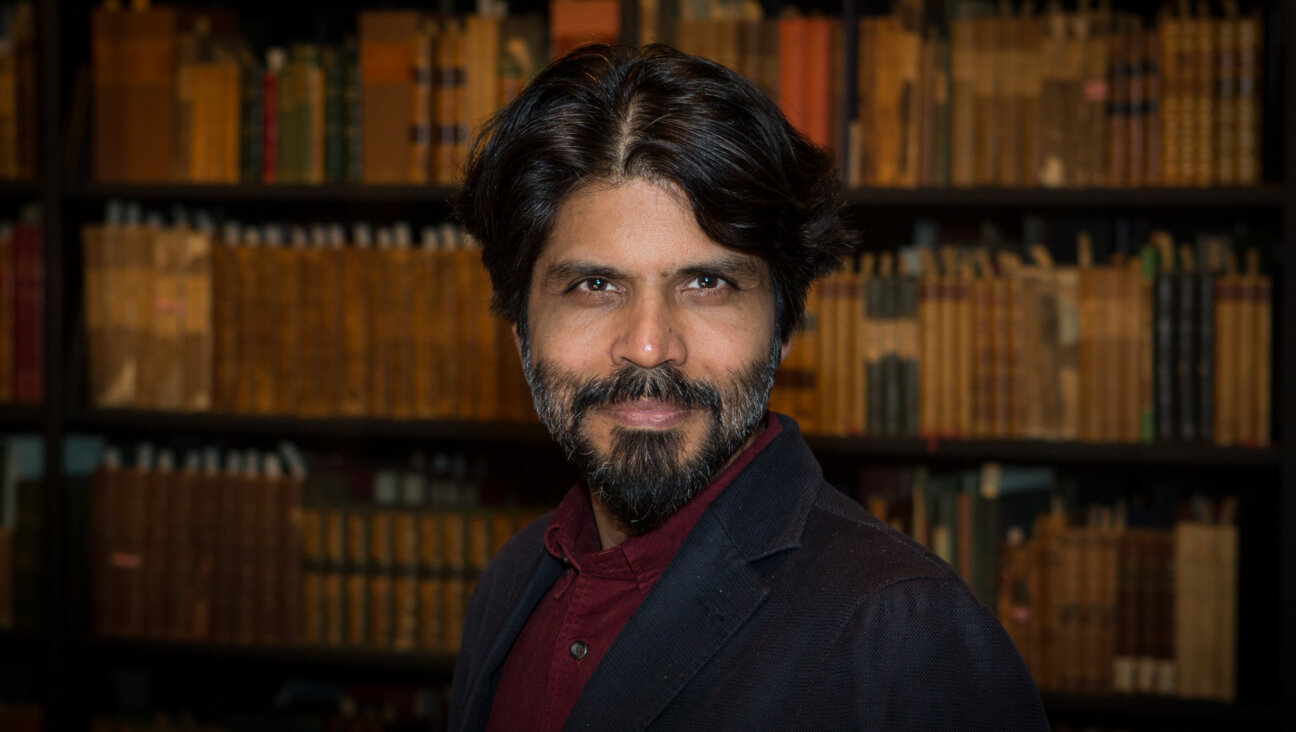Seeking Mameloshn Down South
The following essay is an abbreviated version of the introduction to “Yiddish South of the Border: An Anthology of Latin American Yiddish Writing,” edited by Alan Astro and released by the University of New Mexico Press.
In the ever-popular “The Joys of Yiddish” (1968), Leo Rosten offered the following definition for Ladino: “Ladino, or Judesmo, as it is called, can be written in either Hebrew or Roman characters. It is generally printed in what is called Rabbinical Hebrew letters, or in Latin characters. In writing Ladino, the cursive Hebrew letters are used — just as in writing Yiddish. The first book to be printed in Ladino appeared in 1510, in Constantinople, but some Ladino texts date back to the Middle Ages.”
The reader could be expected to wonder: What on earth does this quote have to do with an anthology of Yiddish stories from Latin America? The answer appears in Rosten’s next paragraph, in which he argues, “Ladino is spoken along the southeastern littoral of the Mediterranean — normally in Turkey, North Africa and, of course, Israel — and in Brazil and other parts of Latin America.” Elsewhere, Rosten adds that “Sephardim are the least numerous of Jewry’s three main groups. The Encyclopedia Britannica (vol. 20, p. 228. 1968 ed.) estimates for 1960: 11,000,000 Ashkenazim; 1,500,000 Oriental Jews; 500,000 Sephardim.”
The demographic data offered by Rosten has surely changed in the last 40 years. Most significantly, the total number of Jews in the world has probably decreased by almost a million. But this isn’t the issue I’m after. Instead, I want to argue with Rosten, the purveyors of the Encyclopedia Britannica and most everyone else who fall into the easy trap of counting the Jews of Latin America — some 400,000 altogether, according to the latest estimates — as Sephardim. Truth is, at least two thirds of those in places like Mexico, Argentina, Cuba, Venezuela and the Dominican Republic — to name but a few of the 27 republics that constitute the region — are Ashkenazim. Just as is the case for the majority of Jews in the United States, their place of origin is the so-called Pale of Settlement in Eastern Europe. The other third is made up of Oriental Jews from places like Turkey, Syria and Lebanon. The number of Sephardim in Latin America is actually small. Some demographers at times include in this category recently converted crypto-Jews.
At any rate, Ladino isn’t as widely spoken a language in the Spanish- and Portuguese-speaking Americas as Yiddish is. I myself am a product of Yiddish day schools in my native Mexico. Similar educational institutions existed — some of them are still active — in other parts of the hemisphere. Likewise, a Yiddish theater, newspapers, music and other cultural manifestations were staples of the Eastern European immigrants who arrived on those shores in the late 19th century and throughout the first half of the 20th century — at first staying in peripheral places, eventually moving into metropolitan centers. My own father, an actor, started his career on the Yiddish stage south of the border.
For the most part, the histories of Yiddish and its literature seldom give space to the production in Latin America. I remember my increasing frustration in the 1970s when browsing through reference volumes in search of recognizable names and works — little, if anything, was ever conveyed. It is because of this that I owe Alan Astro heartfelt thanks for his effort to unearth and translate an array of tales, poems and essays from places as diverse as Uruguay, Colombia, Chile and even Texas. In his preface, Astro lists the scattered omnibuses of Yiddish letters from the region that have appeared in Spanish and mentions the chapter devoted to Latin America in “A History of Yiddish Literature” (1985) by Sol Liptzin. These items were not available to a curious Mexican-Jewish adolescent. The majority of the authors he has chosen, I predict, will be unknown even to specialists and literary historians. Others, like Leib Malach, have been subjects of scholarly discussions. Personally, I am thrilled to note the inclusion of poet Jacobo Glatz, the father of Margo Glantz, whose 1976 memoir, “Las genealogías” (“The Family Tree”), is an important contribution to Jewish-Mexican letters. Likewise, I’m excited to see a poem by Isaac Berliner, whose full collaboration with Diego Rivera (they collaborated in 1936 in the book “City of Palaces”) awaits proper exposure.
In its content, the mosaic Astro puts together for us isn’t always pleasant: Readers anticipating the type of Magical Realism that has come to be expected from literati in the Hispanic world will be disappointed. Instead, Jews are portrayed as pimps, prostitutes and moneylenders. For example, in one of the most disturbing stories in the anthology, “Jesús” by Pinhes Berniker — which I included in my own collection, “The Scroll and the Cross: 1,000 Years of Jewish-Hispanic Literature” (2003) — a bearded Jewish salesman makes a fortune selling Catholic icons to gentiles. This isn’t unexpected, though. Immigrant life in general is miserable, as one sees in the literature produced by those that experienced the journey. In the Jewish novels of Abraham Cahan, Henry Roth and Anzia Yezierska, the picture is frequently a grim one. Furthermore, the odyssey from Europe to the Pampas was often portrayed in Poland, Lithuania, Russia and the Ukraine as an expedition to hell. The only famous Yiddish stories from Latin America I’m able to make people invoke are the handful by the masters Sholom Aleichem, Sholem Asch and Isaac Bashevis Singer. They are set in, or at least refer to, Argentina (and, on occasion, an eternally rainy Brazil) and invariably deal with the Jewish prostitution ring — la trata de blancas.
“The corpus of Yiddish writing in Latin America, as elsewhere, is surprisingly vast,” Astro writes. Indeed, the total number of volumes published — original works, translations, reprints of Eastern European and American masters — might never be known. But judging by his selection, the intellectual engagement of the Jewish immigrants with the land across the Atlantic was extremely rich. One of Astro’s acknowledged primary sources is the multivolume edition of Yiddish literature edited by Samuel Rollansky in Buenos Aires and released under the aegis of the Argentine YIVO. But Astro’s research has pushed him in countless other directions. The array of material included in his omnibus constitutes a veritable eye-opener to anyone even mildly interested in the fate of the mameloshn.
What is the function of an anthology? Depending whom you ask, you’re likely to get a different response. Personally, I would list four objectives: to offer a context, to create a portable library, to open unexpected vistas and to insinuate new readings of classic texts. With the obvious exception of the latter one, Astro’s effort succeeds in all of these objectives. Rosten finally stands corrected: Alongside Ladino (and sometimes as a veritably eclipsing force), Yiddish — or, in its Spanish spelling, idish — also flourished in Latin America, leaving behind powerfully artistic testaments.
Ilan Stavans is the Lewis-Sebring Professor in Latin American and Latino Culture at Amherst College. His three-volume edition of “Isaac Bashevis Singer: Collected Stories” will be published by the Library of America in June 2004.
The Forward is free to read, but it isn’t free to produce

I hope you appreciated this article. Before you go, I’d like to ask you to please support the Forward.
At a time when other newsrooms are closing or cutting back, the Forward has removed its paywall and invested additional resources to report on the ground from Israel and around the U.S. on the impact of the war, rising antisemitism and polarized discourse.
Readers like you make it all possible. We’ve started our Passover Fundraising Drive, and we need 1,800 readers like you to step up to support the Forward by April 21. Members of the Forward board are even matching the first 1,000 gifts, up to $70,000.
This is a great time to support independent Jewish journalism, because every dollar goes twice as far.
— Rachel Fishman Feddersen, Publisher and CEO
2X match on all Passover gifts!
Most Popular
- 1

Film & TV What Gal Gadot has said about the Israeli-Palestinian conflict
- 2

News A Jewish Republican and Muslim Democrat are suddenly in a tight race for a special seat in Congress
- 3

Opinion Is this new documentary giving voice to American Jewish anguish — or simply stoking fear?
- 4

Culture How two Jewish names — Kohen and Mira — are dividing red and blue states
In Case You Missed It
-

Fast Forward Washington, D.C., Jewish federation will distribute $180,000 to laid-off federal workers
-

Fast Forward House approves bill requiring campuses to report more foreign funding
-

Books So much to say about Israeli violence, so little to say about violence against Jews
-

Opinion Think every Palestinian in Gaza is Hamas? This week’s protests prove you’re wrong
-
Shop the Forward Store
100% of profits support our journalism
Republish This Story
Please read before republishing
We’re happy to make this story available to republish for free, unless it originated with JTA, Haaretz or another publication (as indicated on the article) and as long as you follow our guidelines.
You must comply with the following:
- Credit the Forward
- Retain our pixel
- Preserve our canonical link in Google search
- Add a noindex tag in Google search
See our full guidelines for more information, and this guide for detail about canonical URLs.
To republish, copy the HTML by clicking on the yellow button to the right; it includes our tracking pixel, all paragraph styles and hyperlinks, the author byline and credit to the Forward. It does not include images; to avoid copyright violations, you must add them manually, following our guidelines. Please email us at [email protected], subject line “republish,” with any questions or to let us know what stories you’re picking up.














